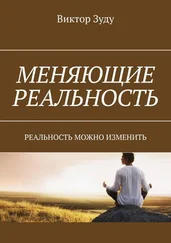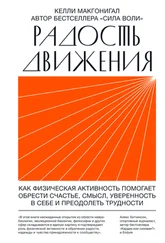Gregory, Erik M. “Understanding Video Gaming’s Engagement: Flow and Its Application to Interactive Media.” Media Psychology Review, Issue 1, 2008. http://www.mprcenter.org/mpr/index.php?option=com_content&view=article&id=207&Itemid=163.
Yee, Nick. “MMORPG Hours vs. TV Hours.” The Daedalus Project: The Psychology of MMORPGS, March 9, 2009, vol. 7–1. http://www.nickyee.com/daedalus/archives/000891.php.
Ben-Shahar, Tal. Happier: Learn the Secrets to Daily Joy and Lasting Fulfillment (New York: McGraw-Hill, 2007), 77. (Бен-Шахар Т. Быть счастливее.М.: Манн, Иванов и Фербер, 2012.)
Этот термин ввела в игровую индустрию Николь Лазарро, которая представила его во время презентаций на ежегодной конференции разработчиков игр.
Hoeft, Fumiko, et al. “Gender Differences in the Mesocorticolimbic System During Computer Game-Play.” Journal of Psychiatric Research, March 2008, 42(4): 253–8. https://www.researchgate.net/publication/5656358_Gender_differences_in_the_mesocorticolimbic_system_during_game-play.
Csíkszentmihályi, Beyond Boredom and Anxiety, xiii.
Csíkszentmihályi, Beyond Boredom and Anxiety, 37.
Csíkszentmihályi, Beyond Boredom and Anxiety, 1, 197.
“Study: Women Over 40 Biggest Gamers.” CNN, February 11, 2004. http://edition.cnn.com/2004/TECH/fun.games/02/11/video.games.women.reut/index.html.
Sutton-Smith, Brian, and Elliot Avedon, eds. The Study of Games (New York: Wiley, 1971).
Thompson, Clive. “Halo 3: How Microsoft Labs Invented a New Science of Play.” Wired, August 21, 2007. http://www.wired.com/gaming/virtualworlds/magazine/15-09/ff_halo.
Sudnow, David. Pilgrim in the Microworld (New York: Warner Books, 1983), 41. Full text available online at http://skynet.ie/~ogami/notes/year%204/writing/Sudnow_Pilgrim%20in%20the%20Microworld.pdf.
Sudnow, David. Pilgrim in the Microworld (New York: Warner Books, 1983), 41. Full text available online at http://skynet.ie/~ogami/notes/year%204/writing/Sudnow_Pilgrim%20in%20the%20Microworld.pdf, 35.
Sudnow, David. Pilgrim in the Microworld (New York: Warner Books, 1983), 41. Full text available online at http://skynet.ie/~ogami/notes/year%204/writing/Sudnow_Pilgrim%20in%20the%20Microworld.pdf, 9.
Sudnow, David. Pilgrim in the Microworld (New York: Warner Books, 1983), 41. Full text available online at http://skynet.ie/~ogami/notes/year%204/writing/Sudnow_Pilgrim%20in%20the%20Microworld.pdf, 20.
Кори Кис объясняет, как поток вписывается в общую картину позитивной психологии, в следующей статье: Corey Lee M. Keyes, “What Is Positive Psychology?” CNN, January 24, 2001. http://archives.cnn.com/2001/fyi/teachers.tools/01/24/c.keyes/.
Hoeft, Fumiko, et al., “Gender Differences.”
Thompson, Clive. “Battle with ‘Gamer Regret’ Never Ceases.” Wired, September 10, 2007. http://www.wired.com/gaming/virtualworlds/commentary/games/2007/09/gamesfrontiers_0910?currentPage=all.
Jenkins, David. “Chinese Online Publishers Sign ‘Beijing Accord.’” Gamasutra News, August 24, 2005. http://www.gamasutra.com/php-bin/news_index.php?story=6312.
Lyubomirsky, S., K. M. Sheldon, and D. Schkade. “Pursuing Happiness: The Architecture of Sustainable Change.” Review of General Psychology, 2005, 9: 111–31; and Sheldon, K. M., and S. Lyubomirsky. “Is It Possible to Become Happier? (And if So, How?)” Social and Personality Psychology Compass, 2007, 1: 1–17.
Впервые этот процесс был упомянут в статье: Brickman and Campbell, “Hedonic Relativism and Planning the Good Society.” In M. H. Apley, ed., Adaptation Level Theory: A Symposium (New York: Academic Press, 1971), 287–302. Совсем недавно он также рассматривался в статье: Bottan, Nicolas Luis, Pérez Truglia, and Ricardo Nicolás. “Deconstructing the Hedonic Treadmill: Is Happiness Autoregressive?” Social Science Research Network, January 2010. http://ssrn.com/abstract=1262569.
Термин «аутотелическая деятельность» впервые использовал Михай Чиксенмихайи в книге Beyond Boredom and Anxiety, 10.
Lyubomirsky, Sonja. The How of Happiness: A Scientific Approach to Getting the Life You Want (New York: Penguin Press, 2008), 64. (Любомирски С. Психология счастья. Новый подход. СПб: Питер, 2014.)
Nelson, Debra L., and Bret L. Simmons. “Eustress: An Elusive Construct, and Engaging Pursuit.” Research in Occupational Stress and Well-being, 2003, 3: 265–322.
Я признательна Крису Бейтмену за то, что он объяснил, какие нейрохимические процессы лежат в основе радости победы в статье: Chris Bateman, “Top Ten Videogame Emotions.” Only a Game, April 9, 2008. http://onlyagame.typepad.com/only_a_game/2008/04/top-ten-videoga.html.
Berns, G. S. “Something Funny Happened to Reward.” Trends in Cognitive Sciences, 2004, 8(5):193–94. DOI: 10.1016/j.tics.2004.03.007.
Keltner, Dacher. Born to Be Good: The Science of a Meaningful Life (New York: Norton, 2009), 219–20.
Keltner, Dacher. Born to Be Good: The Science of a Meaningful Life (New York: Norton, 2009), 250–69.
Gilbert, Elizabeth. Eat, Pray, Love (New York: Viking, 2006), 260. (Гилберт Э. Есть, молиться, любить. М.: Рипол Классик, 2016.)
Многие исследования, на результатах которых основан этот перечень внутренних вознаграждений, рассматриваются в следующих книгах: Martin Seligman, Authentic Happiness (Селигман М. В поисках счастья.М.: Манн, Иванов и Фербер, 2011.); Martin Seligman, Learned Optimism (Селигман М. Как научиться оптимизму. Измените взгляд на мир и свою жизнь. М.: Альпина Паблишер, 2017.); Seligman and Christopher Peterson, Character Strengths and Virtues; Sonja Lyubomirsky, The How of Happiness (Любомирски С. Психология счастья. Новый подход. СПб: Питер, 2014.); Tal Ben-Shahar, Happier (Бен-Шахар Т. Быть счастливее.М.: Манн, Иванов и Фербер, 2012.); Jean M. Twenge’s Generation Me; Mihály Csíkszentmihályi, Beyond Boredom and Anxiety; Eric Weiner, The Geography of Bliss.
Lyubomirsky, The How of Happiness, 16. (Любомирски С. Психология счастья. Новый подход. СПб: Питер, 2014.)
Читать дальше
Конец ознакомительного отрывка
Купить книгу











